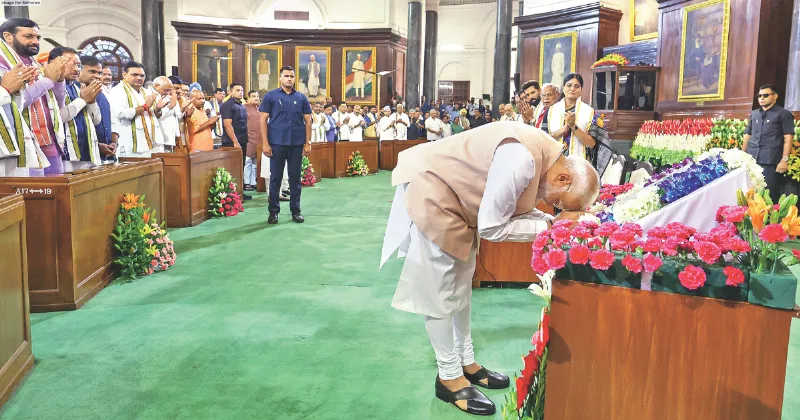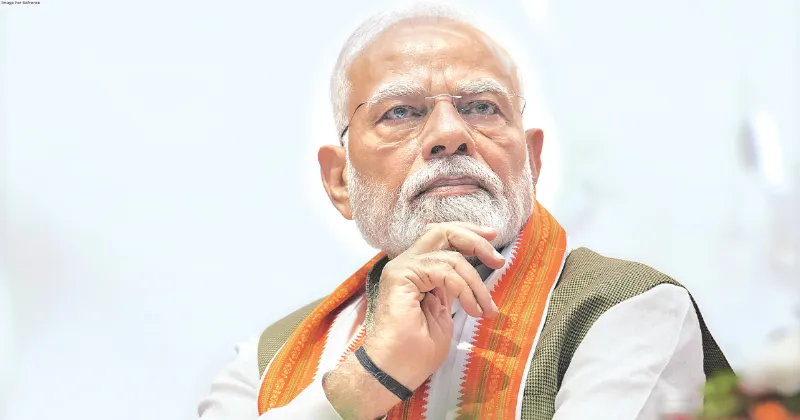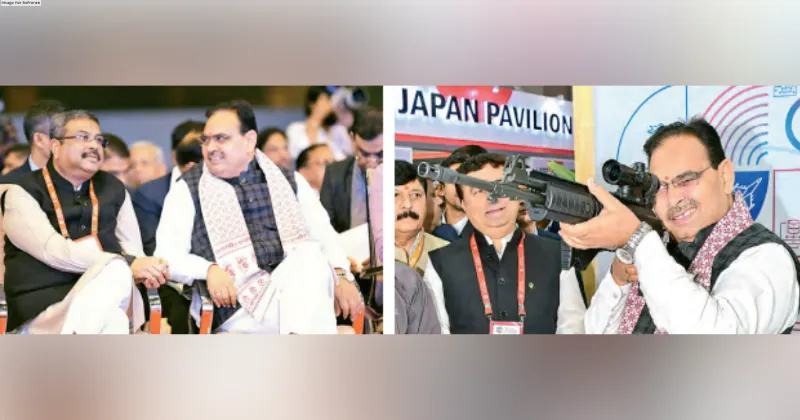Latest News
MODI’S INSPIRING VISION FOR JUSTICE & EQUALITY!

The narrators share that under the leadership of Prime Minister Narendra Modi, India is celebrating the 75th anniversary year of the adoption of its Constitution, which stands as the cornerstone of the country’s democratic values. Modi’s unwavering commitment to these Constitutional ideals is evident, from his passionate activism during the Emergency to the visionary initiatives he has driven as the nation’s Prime Minister and lots more...
Narendra Modi’s commitment towards Constitution dates to Emergency days
November 26 is the most important day in the democratic history of India. This is the day in 1950 that we got our own Constitution. Today, under the leadership of PM Narendra Modi, India is celebrating the 75th anniversary of the adoption of the Constitution as the cornerstone of democratic values of the country. During the Emergency, Modi ji was given the responsibility of conducting all pro-democracy activities clandestinely to stave off police suspicion and subsequent punitive action. During this time, he used to send across leaflets from Gujarat through trains to Kolkata, Chennai and other places to whip up public opinion against the Emergency. He didn’t do so through the postal process because that could put his activities in trouble. So, he devised this technique to deliver his message without raising suspicion or getting caught. His commitment towards democracy was unwavering even in those early days of his political initiation. It was way back in 1991 that Modi ji, under the leadership of then BJP National President Murli Manohar Joshi, took out the Ekta Yatra from Kanyakumari to Kashmir to ascertain the importance of a united India under one Constitution. As a symbol of the same mission, he unfurled the Tricolour at Srinagar’s iconic Lal Chowk on the auspicious day of January 26. The same objective saw fruition when years later, the Union government under him, abrogated Article 370 from Kashmir and brought it under the Indian Constitution, ensuring the complete application of the Indian Constitution from Kanyakumari to Jammu and Kashmir. Modi’s dream of one nation was officially fulfilled with this seminal step towards unity. In 2010, after becoming the CM, his landmark Samvidhan Gaurav Yatra is written in golden letters in the annals of history. This was the first time in India that the CM of a state walked with the Constitution’s giant replica on an elephant’s back. This generated widespread public interest and helped in making the Constitution an important part of every citizen’s life. On the 75th anniversary of the Constitution’s adoption, the Modi government is striving to make it a people’s movement with nationwide celebrations, reminding citizens that it is not just a document but the vision and foundation of a developed India. PM Modi’s gestures—bowing at the steps of Parliament in 2014, bowing before the Constitution in 2019, calling it a ‘holy text’ for governance, and his speeches emphasising its guiding principles — all serve as constant reminders of Constitution’s significance in India’s democratic framework.
Modi took innumerable steps to strengthen constitutional values
Narendra Modi’s decades-long commitment to constitutional ideals shines through, from his intense activism during the Emergency days to his visionary initiatives after being the country’s PM. As a young activist, he worked covertly to expose the government’s undemocratic actions and constitutional violations during the tumultuous Emergency (1975– 77). Using pamphlets and secret communications, he raised awareness and inspired resistance. These efforts during dark chapter marked the start of his lifelong devotion to constitutional values. In 1991, Modi further advanced his commitment to constitutional ideals through the Ekta Yatra, promoting the message “Ek Desh, Ek Samvidhan” (One Nation, One Constitution). As the chief coordinator of the Yatra led by Murli Manohar Joshi from Kanyakumari to Kashmir, he successfully spread the message advocating the abrogation of Article 370, which granted special powers to Kashmir. The Yatra symbolised his belief in the unity and sovereignty enshrined in the Constitution. Later on, during his tenure as Gujarat’s Chief Minister, Modi prioritised spreading awareness about the Constitution among ordinary citizens. One of his most notable initiatives was the Samvidhan Gaurav Yatra. In 2010, during the 60th anniversary of the Indian Constitution, CM Modi organised Yatra in Gujarat, a campaign to celebrate the Constitution and take its ideals to the masses. A grand procession was organised in Surendranagar of Gujarat, featuring a massive replica of the Constitution carried on an elephant. CM Modi walked alongside the elephant, joined by ministers, leaders, and thousands of people. It was a powerful visual representation of reverence and importance Modi held for Constitution. In 2011, Modi took special efforts to make the Constitution accessible to all by launching its Gujarati version, ‘Bharat Nu Samvidhan’. This initiative aimed to bring the Constitution closer to Gujarati citizens, ensuring its values resonated deeply with the regional population. Modi’s vision extended to translating the Constitution into all regional languages, reinforcing the idea that it belongs to every citizen. It was his suggestion to name the old Parliament building as Samvidhan Bhawan. Abrogation of Article 370 in 2019 marked a pivotal moment, integrating region into the constitutional framework of India. In July 2024, Modi govt announced observance of Samvidhan Hatya Diwas to be celebrated annually on June 25 to serve as a reminder of the Emergency period, dark chapter in India’s democratic history when constitutional principles were severely compromised.
COMPILED AND EDITED BY SHASHIKANT SHARMA





















